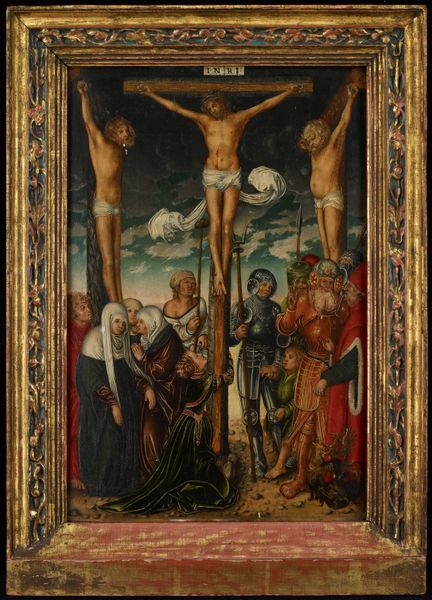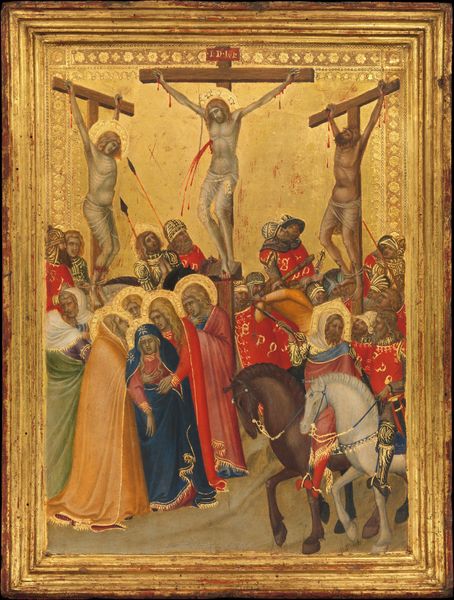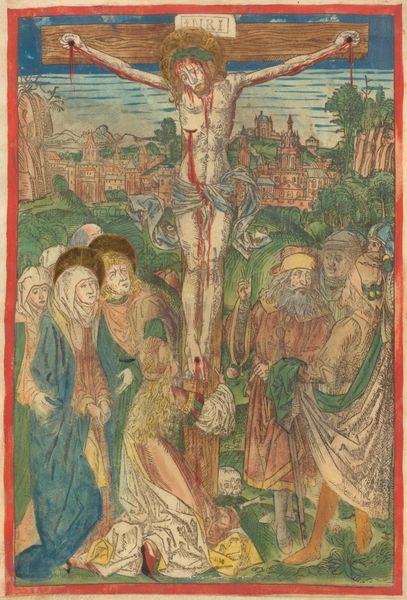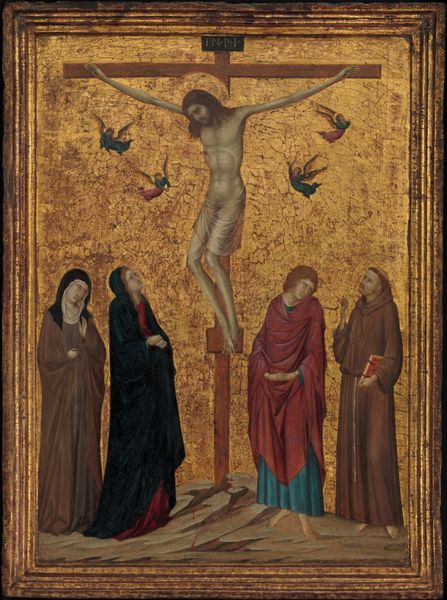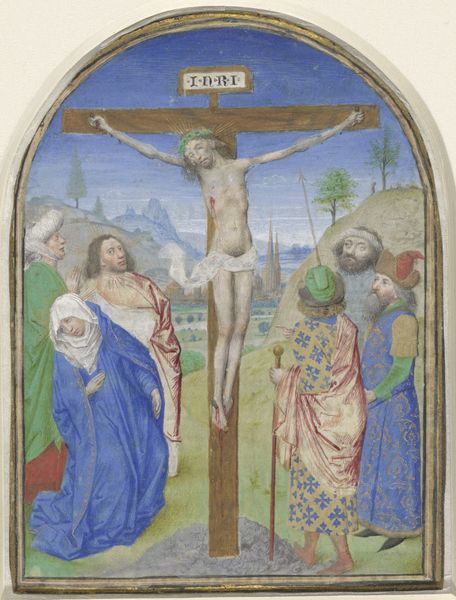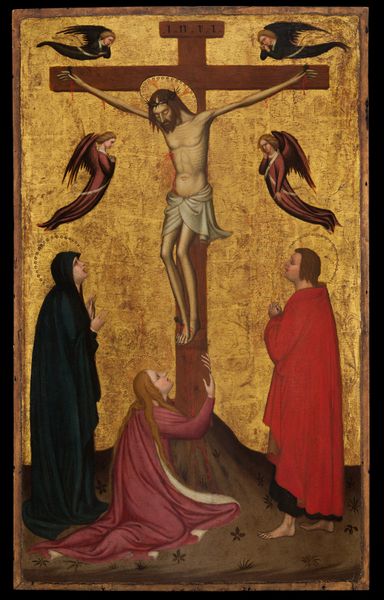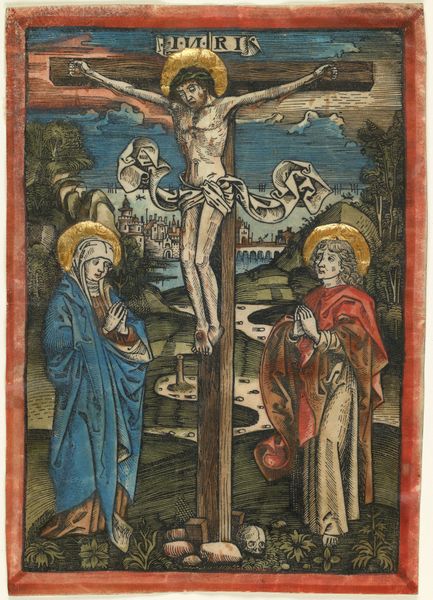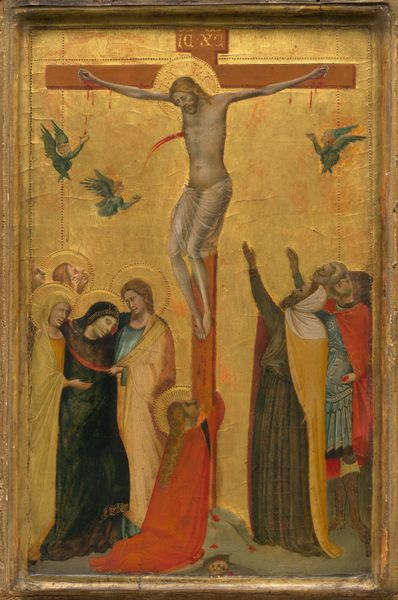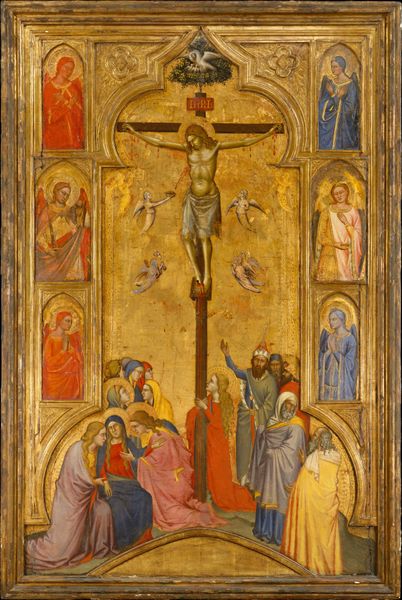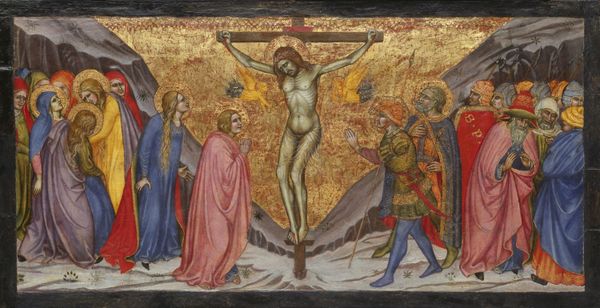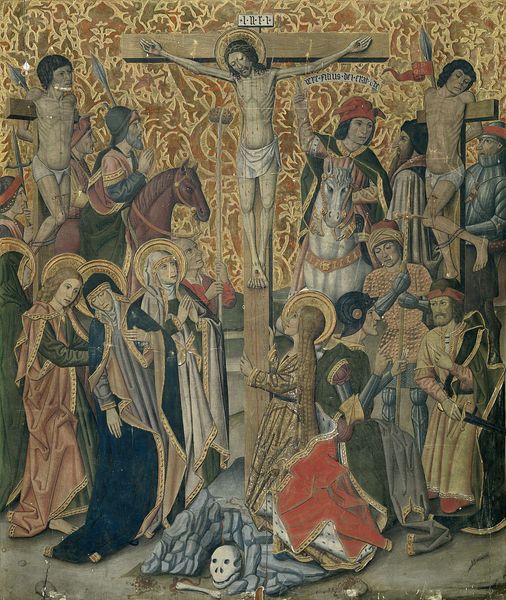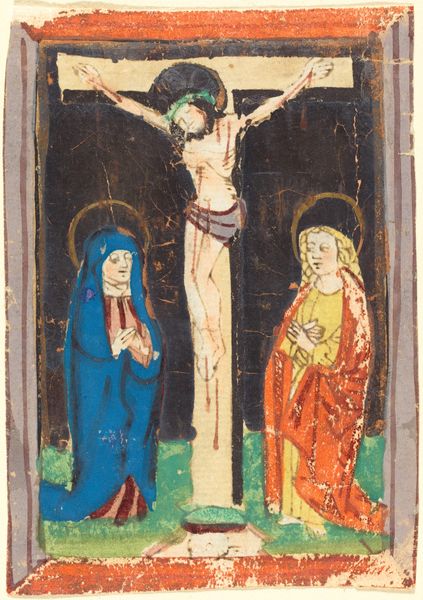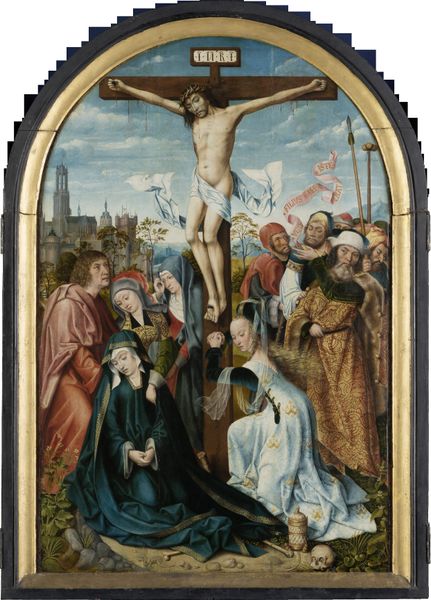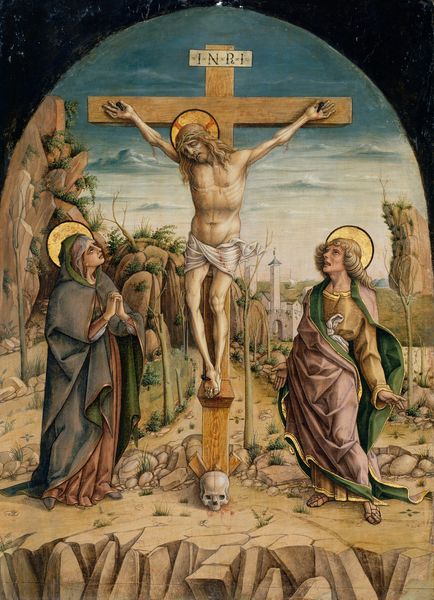
tempera, painting
#
medieval
#
narrative-art
#
tempera
#
painting
#
figuration
#
oil painting
#
tile art
#
naive art
#
crucifixion
#
history-painting
#
northern-renaissance
#
christ
Dimensions: 6 5/8 x 4 13/16 in. (16.8 x 12.2cm)
Copyright: Public Domain
Curator: Looking at this painting, what strikes you immediately? Editor: The sheer emotional density. It's almost suffocating, especially the cluster of faces below the cross. You can feel the weight of collective grief and malice. And that dog in the right-hand corner only intensifies that sensation—perhaps it’s symbolic of abandonment. Curator: Yes, I agree. We are viewing The Crucifixion, an extraordinary work likely rendered in tempera during the early 1480s. This evocative piece comes to us courtesy of the Housebook Master, a German artist active in the late fifteenth century. Editor: The positioning of Christ above such blatant suffering creates a harrowing juxtaposition. It’s very cleverly arranged from a power and political standpoint, where social class seems especially reinforced. The helmet, skull, and dog imply war, violence, and, potentially, a decaying nobility as spectators in this historical event. What meaning might that hold? Curator: That arrangement certainly creates a powerful symbolic tension. Note how the artist employs an older style to communicate deep spiritual meaning through Christ, such as a direct visual reference of sacrifice and suffering through the iconographic representation of the instruments and agents involved in Christ's ordeal. Even in its most agonizing imagery, we find a familiar visual and psychological terrain, which allows the painting to access cultural memory that influences one's belief system over centuries. Editor: That tension makes me think about the artist's position—complicit or critical? Is this merely a depiction of a historical event that mirrors medieval class disparities or a subtle critique of that power structure, of using suffering to reinforce societal stratification? And is Christ intentionally rendered powerless atop the cross? I suppose our viewpoints depend on personal factors, perhaps even one's cultural memory. Curator: Absolutely. What this work achieves, I feel, is a certain depth, a resonance with the themes of sacrifice and grief—which explains why it has continued to captivate viewers throughout time. Editor: Indeed. And the way it invites us to grapple with historical power dynamics ensures it will continue sparking complex, essential conversations. The collective expressions are a somber warning for things we have yet to confront today.
Comments
No comments
Be the first to comment and join the conversation on the ultimate creative platform.
